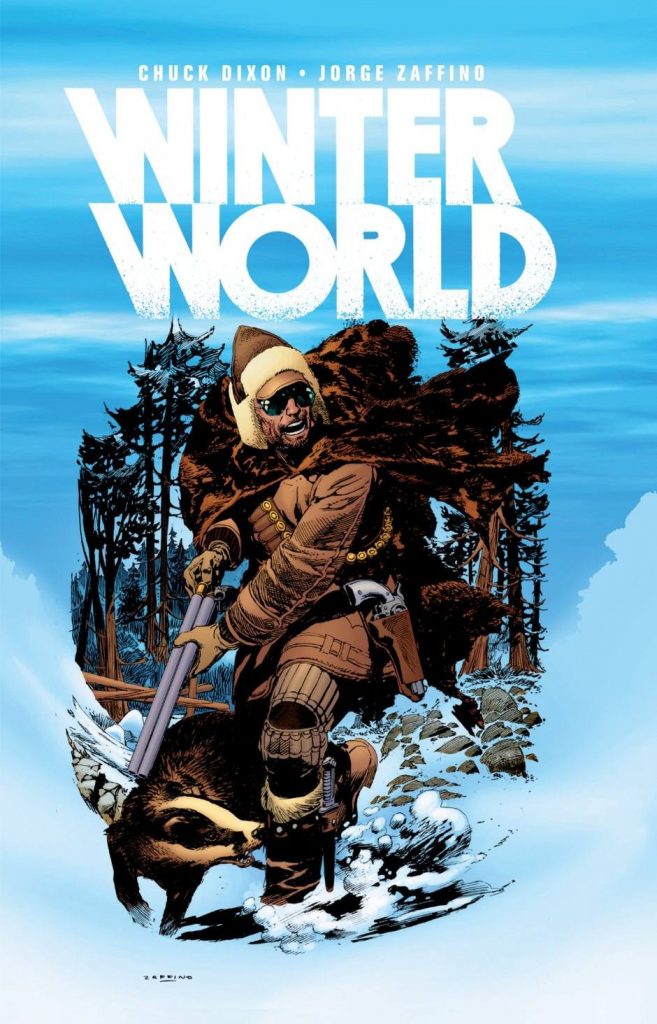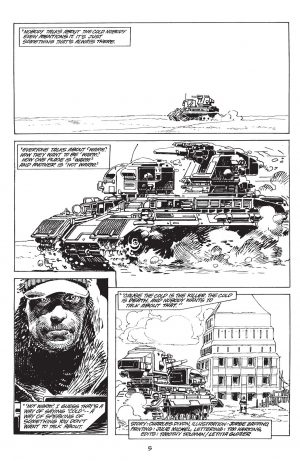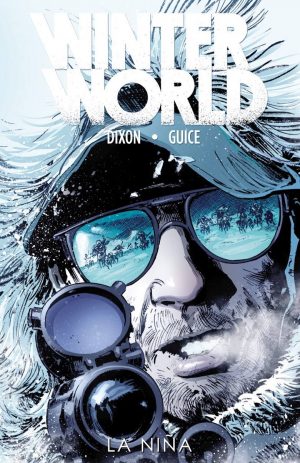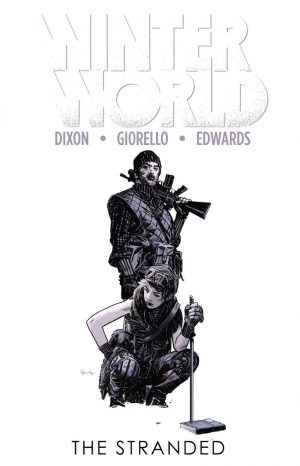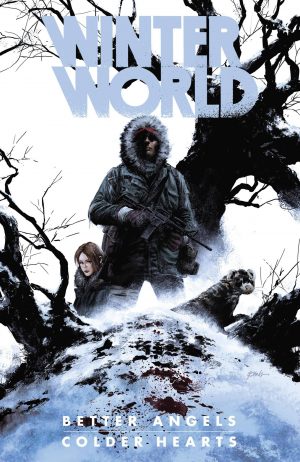Review by Frank Plowright
The volume title may separate Winterworld into two blocks of text, presumably to make the logo larger, but other than on volume titles it’s a single word all the way.
Although he’s Argentinian, it’s the cultured and detailed art of Jorge Zaffino that makes Winterworld seem as if it’s a European collaboration. The sample art is the opening page, which creates one hell of an impression, with the detail on the ice tank and the haunted eyes of the narrator both displaying a level of craft way beyond the prevailing standards when Winterworld first saw print as comics in the late 1980s. The narrator is Scully, who travels and trades in this post-apocalyptic world, protected by a savage badger and soon to pick up a travelling companion in the young woman Wynn. It’s a hard world Chuck Dixon and Zaffino create, being civilised not a consideration when every day is a struggle. The remnants of the earlier world remain, a baseball stadium producing both shelter and terror, and what’s called the Pizza Hut Village a protected enclave.
For the first of two stories, Dixon takes the standard dystopian approach of introducing his characters along with the threat, and then having them go about their business in a dog eat dog world. The imagination is all in the conception and the art as the plot treads even more familiar paths now than it did when first issued. Scully is the action hero who maintains a frosty exterior for protective purposes while being one of the few left in his world with a conscience. Anyone who’s seen a few action movies will know roughly where Dixon’s headed, and there aren’t many surprises in store, perhaps the biggest being that having introduced the novelty of badger accompanying Scully, so little use is made of it.
Wynn remembers machines that actually fly originating from somewhere warmer, and by the end of the opening story she’s convinced Scully, to whom that sounds like a better life. ‘Winter Sea’ begins with them on an ice skimmer heading South into what was Mexico, and this time Dixon introduces a little more mystery into his plot. Observant readers will pick up on a couple of details, while Scully’s own voiced observations add the remainder. Given that the horrors of a frozen world are the series foundation, nothing should upset that status quo, so as far as Scully and Wynn are concerned that’s not going to change, but the plot Dixon provides this time is more logical and more engaging. However, it’s Zaffino’s depiction of action, personality and surroundings that’s again the real star turn, lifting Winterworld into something above your average action thriller.
25 years after this material Dixon returned to Winterworld for La Niña. Also, don’t worry about credits for a colourist on black and white stories. The journey from serialised colour comics to graphic novel took 16 years, and chapter credits haven’t been edited.
